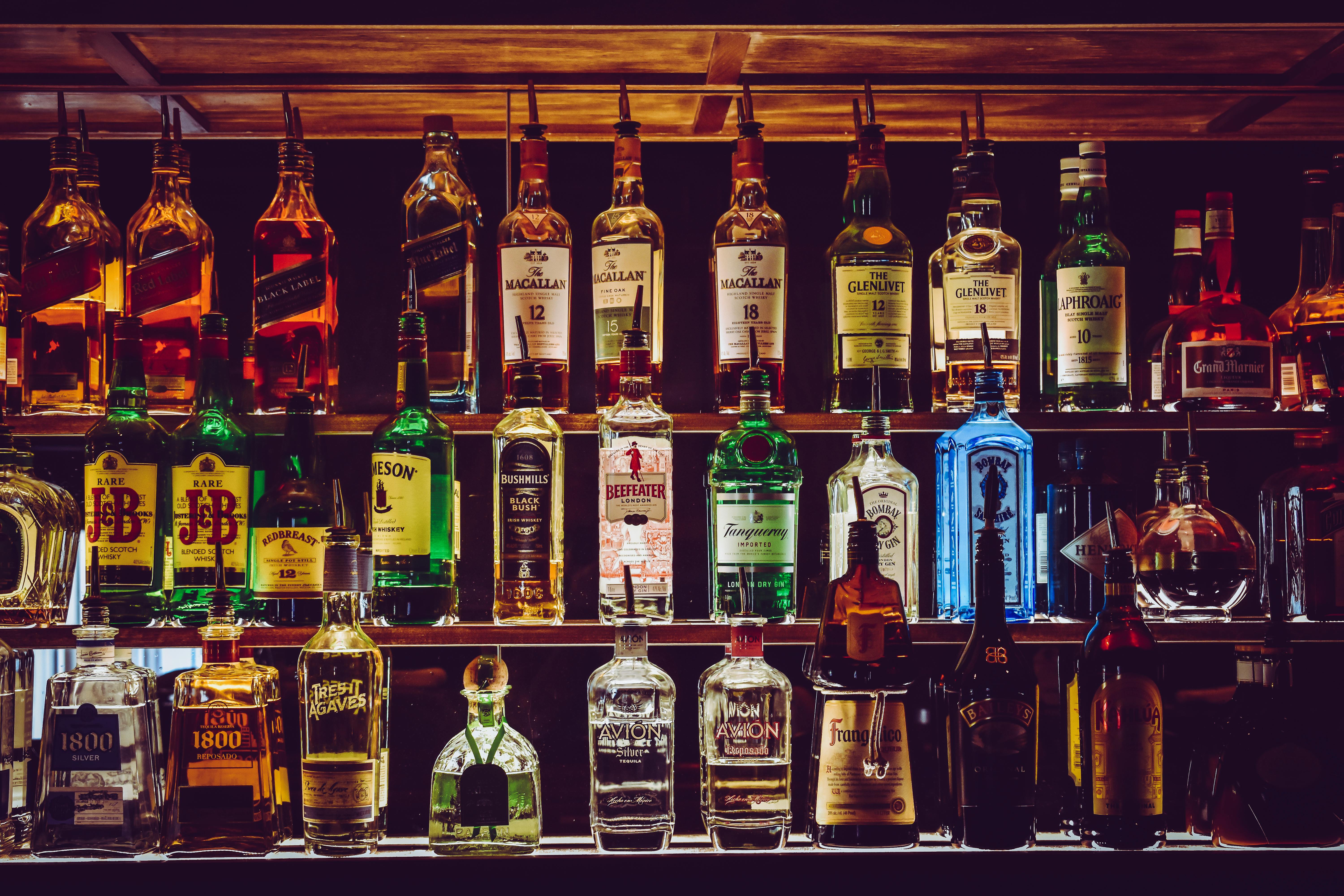Distilling liquor is the process of separating a complex liquid into its component parts, such as water and alcohol. This process allows us to concentrate the alcohol content and create higher-proof drinks. Distillation can be done in a variety of ways, but all methods involve heating the liquid to its boiling point, then collecting and condensing the vapor that rises off it. The resulting liquid is now much more concentrated than the original. In this guide, we’ll take you through the basics of distilling liquor so you can make your own high-proof spirits at home.Distillation is a process of separating or purifying a liquid through evaporation and condensation. It is used to purify liquids, such as water or alcohol, and to separate mixtures of liquids that have different boiling points. During the distillation process, the liquid mixture is heated until one of the components vaporizes, leaving behind any impurities. The vapor is then captured and condensed into a separate container.
Distilling Liquor
Distilling liquor is a long and intricate process that requires patience and precision. The first step in distilling liquor is to create the mash, which is a mixture of grains, fruits, or other ingredients that are combined with water and heated to break down starches into fermentable sugars. The mash is then placed in a fermentation vessel where yeast is added. The yeast consumes the sugars and converts them into alcohol. The fermented liquid, known as wash, contains about 8-12% alcohol.
The next step in distilling liquor is to place the wash in a still and heat it up until it boils. As the wash boils, the alcohol vaporizes faster than the water, allowing it to be collected separately from the liquid. This vaporized alcohol is then cooled down so that it condenses back into liquid form. This collected liquid is known as distillate, which can contain anywhere from 20-95% alcohol depending on how many times it has been distilled.
Once you have your distillate, you can now adjust its flavor profile by adding various herbs or spices to impart different flavors and aromas
Equipment Needed for Home Distilling
Brewing and distilling at home is becoming an increasingly popular hobby. Distilling can be a fun and rewarding experience, but it is important to have the right equipment. To get started, you will need some basic equipment such as a still and thermometer. You will also need other items such as fermentation containers, tubing, filters and cleaning supplies.
The most important piece of equipment for home distilling is the still. There are several types of stills available and they come in different sizes and shapes. The most common type of still is a pot still which is a simple, one-piece unit that has a lid with a condenser attached to it. Other types of stills include column stills which are more complex systems with multiple pieces and reflux stills which are designed to maximize flavor and aroma extraction from the fermented mash.
In addition to the still, you will also need some other equipment such as thermometers, fermentation containers, tubing, filters, cleaning supplies and measuring cups. Thermometers are essential for monitoring temperatures when brewing or distilling. They allow
Introduction
Moonshine has been around since the late 1700s and has stood the test of time as a popular beverage. It’s also known as white lightning, hooch, and mountain dew, among other names. Making your own moonshine can be a rewarding experience, but it’s important to understand the process before you get started. In this guide, we’ll explore how to make moonshine safely and legally at home.
Choosing Your Ingredients
The first step in making moonshine is choosing your ingredients. The main ingredient in moonshine is corn mash – a mixture of ground cornmeal, yeast, and water. You’ll also need sugar or molasses for additional fermentable sugars, as well as yeast nutrients for a better fermentation process. Depending on your desired flavor profile, you may also opt to use fruits or herbs for additional character.
Preparing the Mash
Once you have all of your ingredients together, you can begin preparing the mash. Start by combining the cornmeal with water in a large
The Benefits of Home Distilling
Distilling at home is becoming popular as more people discover the benefits it offers. Home distillation provides an economical and efficient way to make a variety of spirits, and it also offers a unique experience that can be enjoyed by all. Here are some of the benefits of home distilling:
Cost Savings: The cost savings associated with home distilling can be substantial. Not only will you save on the cost of purchasing spirits from a store, but you’ll also save on energy costs, as distillation is much more efficient than traditional brewing methods. You’ll also save money on ingredients, as you can purchase bulk ingredients to use in your spirits.
Unique Experience: Home distilling provides an experience unlike any other. You can create custom blends to suit your own tastes and preferences, and experiment with different techniques to produce unique and interesting flavors. Plus, it’s a great way to spend time with friends and family, and learn more about the craft of distilling.
Environmental Responsibility: Home distillation is far more energy-efficient than traditional brewing methods,

Advantages of Home Distilling
Home distilling provides many advantages for the craft enthusiast. It allows you to create your own unique flavors and recipes, giving you ultimate control over the quality of your product. Additionally, home distilling can be a cost effective way to produce high quality spirits, as it eliminates the need to buy expensive equipment and ingredients. It also allows you to experiment with different types of fermentation and distillation techniques, providing an opportunity to learn more about the craft. Finally, home distilling is a great way to share your creations with friends and family, creating memories that can last a lifetime.
Disadvantages of Home Distilling
While home distilling has many advantages, it does come with some risks and drawbacks. Most importantly, it is illegal in many countries and states due to safety concerns. Additionally, it requires specialized equipment which can be dangerous if not used properly; inexperienced or careless home distillers can create hazardous conditions that could lead to explosions or fires. Furthermore, while crafting your own spirits may seem like a fun hobby at first, it can quickly become expensive if you don’t plan
Types of Alcohol to Distill at Home
Distilling alcohol at home is an enjoyable and rewarding experience. It can also be dangerous if done improperly, so safety must always come first. With that in mind, it’s important to understand the different types of alcohol available for home distillation. The most common types of alcohol to distill at home are vodka, gin, whiskey, rum, brandy and absinthe.
Vodka is a clear spirit made from a grain mash or other agricultural products such as potatoes or sugar beets. It is usually distilled multiple times to achieve a high level of purity and smoothness. It is typically flavored with botanicals or fruits prior to bottling and can be used in a variety of cocktails.
Gin is another type of clear spirit that is usually made from grain mash and flavored with juniper berries and other botanicals. It has a distinct flavor that sets it apart from other spirits and makes it popular for use in cocktails such as the martini or gimlet.
Whiskey is an amber-colored spirit made
Safety Considerations for Distilling Liquor
Distilling liquor is a complex process, and it is important to take all necessary safety precautions. Proper safety equipment, such as gloves, goggles, and respirators must be worn when handling any materials that may contain hazardous substances. Additionally, it is important to ensure all containers used for distillation are designed to withstand the pressures and temperatures associated with the process. It is also important to keep the distillery area well ventilated and free of flammable materials.
When dealing with high proof alcohols, there is a risk of explosions or fire if proper caution is not taken. It is recommended that any open flames or spark-producing devices be kept away from the distillation area. Additionally, it is important to have an appropriate fire extinguisher available in case of emergency.
It is also important to be aware of any potential environmental hazards associated with distillation. Distillery waste can contain hazardous chemicals which can contaminate ground and surface water if not properly disposed of. As such, it is important to ensure all waste materials are properly handled and disposed of according to local regulations.
Finally, it is important to ensure that all

Conclusion
Distilling liquor is a process that requires patience, precision, and attention to detail. It is not something that should be taken lightly as it can produce dangerous results if done incorrectly. For those looking to produce their own distilled liquor, there are many resources and instructions available online to help guide the distillation process. It is important to remember that any distilled alcohol should not be consumed until it has been aged for a minimum of two months so the flavor can fully develop.
Distilling liquor is an art form, but with patience and practice, you can learn how to distill your own spirits safely and effectively. There are many different types of distilled liquors out there, each with its own unique flavor profile, so no matter what your tastes are there’s sure to be something for everyone. With the proper tools and knowledge, you too can become a master distiller in no time!

